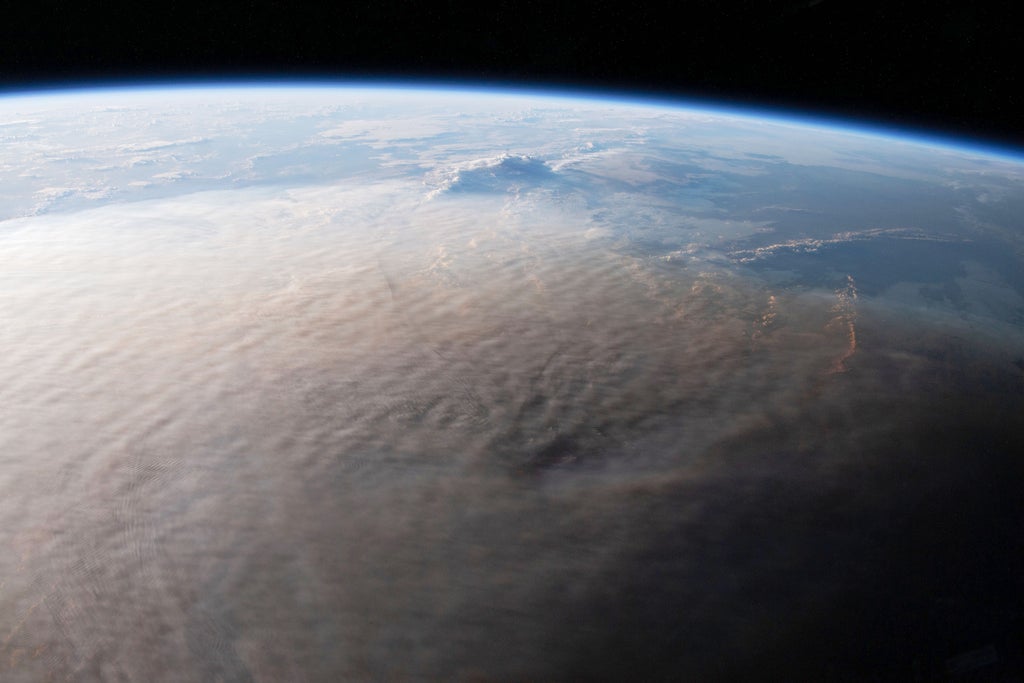
The powerful volcanic eruption in Tonga this month, which triggered a tsunami, was about a thousand times more powerful than the atomic bomb dropped by the US on Hiroshima during the Second World War, according to Nasa.
“This is a preliminary estimate, but we think the amount of energy released by the eruption was equivalent to somewhere between 4 to 18 megatons of TNT,” Nasa scientist Jim Garvin said in a new blog post.
In comparison, they said that Mount St Helens in the US exploded in 1980 with 24 megatons and Krakatoa burst in 1883 with 200 megatons of energy.
“That number is based on how much was removed, how resistant the rock was, and how high the eruption cloud was blown into the atmosphere at a range of velocities,” added Dr Garvin, chief scientist at Nasa’s Goddard Space Flight Center.
Nasa scientists have been using a combination of satellite observations and surface-based geophysical surveys to track the evolution of this rapidly changing piece of Earth.
Before the eruption, they said the Hunga Tonga-Hunga Ha’apai volcanic island was two separate islands that were joined by the formation of new land in 2015. However, following the eruption, they say all of the new land “is gone”, along with large chunks of the two older islands.
Nasa researchers have been studying this patch of the planet for the last six years to understand how the young terrain was eroding due to the churn of waves and occasional battering by tropical cyclones.
They were also assessing how different flora and fauna, including shrubs, grasses, insects, and birds, had moved from the lush ecosystems of Hunga Tonga and Hunga Ha’apai and colonised the more barren landscapes of the newer land.
While at the beginning of 2022, the volcanic activity seemed “typical enough”, with intermittent, small explosions of ash, steam, and other volcanic gases, they took a turn soon and began reshaping the landscape and enlarging the island by adding new deposits of ash and tuff to the growing volcanic cone.
“By early January, our data showed the island had expanded by about 60 percent compared to before the December activity started,” Dr Garvin said.
“The whole island had been completely covered by a tenth of a cubic kilometre of new ash. All of this was pretty normal, expected behaviour, and very exciting to our team,” he added.
However, in mid-January, the researchers said an “unusually powerful set of blasts” sent ash surging into the stratosphere.
These explosions on January 15 launched material as high as 40km, “and possibly as high as 50 kilometres, blanketing nearby islands with ash and triggering destructive tsunami waves”, they noted.
Three people, including two Tongan nationals and a British woman, have been confirmed killed by the eruption and the tsunami that have destroyed hundreds of homes and cut off communications on several islands.
The Tonga government said on Monday that more than 80 per cent of the country’s 105,000 inhabitants have been affected by the ashfall and tsunami. Politicians and aid agencies have warned that there could be potential food shortages since crops across Tonga were ruined by the ash.
Contactless flights and ships carrying relief material, including fresh water, have been arriving in Tonga since last week in an effort to support the people and also as a precaution to keep the novel coronavirus infection out.







